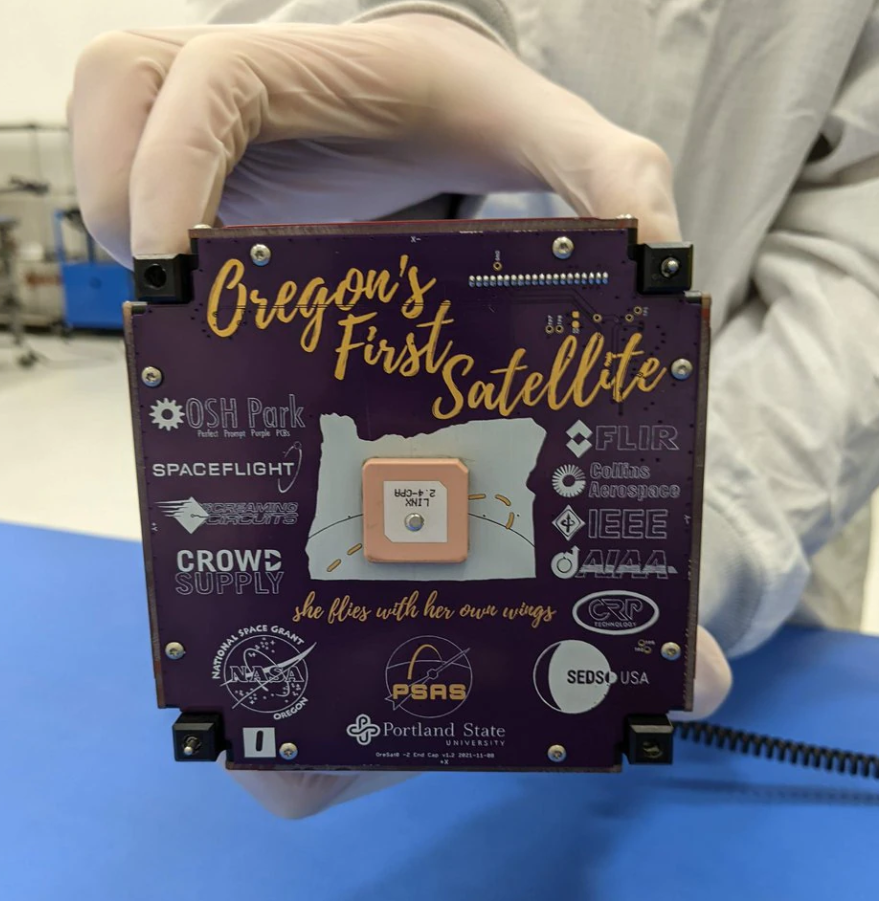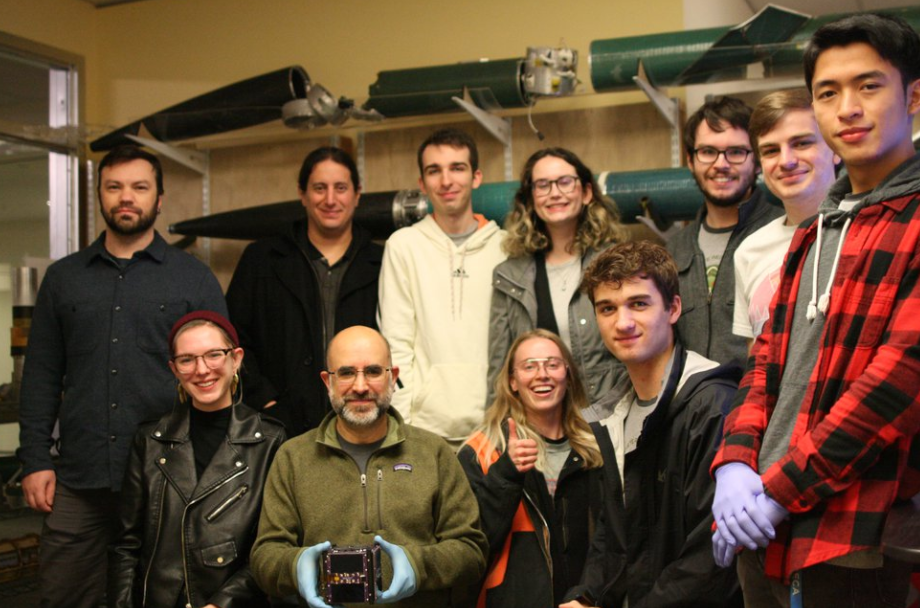We are thrilled by the recent successful deployment of OreSat0 into orbit and congratulate the Portland State Aerospace Society (PSAS) on their tremendous achievement!

After months of research, testing, and development, the first Oregon-made satellite, built by Portland State University students apart of the Portland Aerospace Society, was launched into space this month and is currently orbiting the earth sending back data packets.
The Portland State Aerospace society is a primarily undergraduate group at Portland State University that builds small rockets and satellites.

OreSat0, made of solar panels, batteries, radios, computer, GPS, and a star tracker, has been years in the making, according to David Lay, an Electrical Engineering undergrad involved in the Portland State Aerospace Society.


